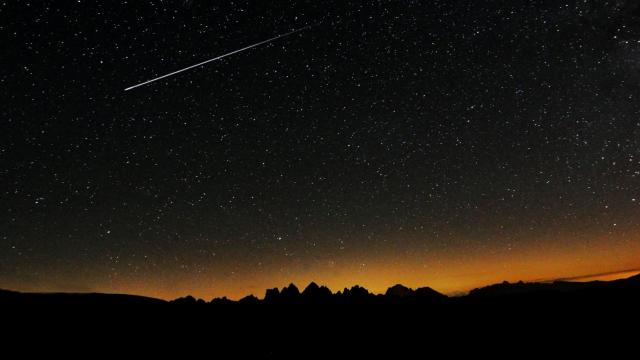Tonight, or in the small hours of tomorrow morning, you’ll be able to see the best of Perseid meteor shower. The summer’s best and longest celestial spectacle is peaking August 11-13, bringing screaming rocks through the ether at a faster clip than at any other point during the six-week shower.
Though the Perseids have been jetting steadily above our heads for nearly a month, now’s the ideal time to venture outdoors for peak stargazing.
What are the Perseids?
As Lifehacker noted at the beginning of summer, the Perseids are the season’s annual visual feast, a six-week procession of burning rocks that follow in the wake of the comet 109P/Swift-Tuttle, which orbits the sun once every 133 years. We’re lucky to catch the detritus of the Swift-Tuttle, as it’s a behemoth with a radius of 26 km. Given its sheer size, meteoroids break off from the larger rock and create the Perseids, which keep stargazers affixed to the heavens for the majority of the summer.
The shower is named after its radiant constellation, Perseus, named after the Greek demigod who was famous for killing the monster Medusa and thus given a home among the stars when he died. During a typical evening, the shower will send about 60 rocks screaming through the cosmos per hour. That ramps up during the shower’s peak, when around 100 per hour become visible.
How to see the Perseids
As with all meteor showers, it’s important to make sure you’re in an area free of light pollution. You want darkened skies and, if possible, a nice isolated spot to take in the show. This’ll be easier if you’re in an area without a lot of buildings, as skyscrapers and streetlights will spoil your chances of seeing the Perseids at peak brilliance.
Importantly, you’ll want to venture outdoors from midnight until dawn, as EarthSky notes. The space and science publication elaborates on some best practices for catching the Perseids:
[Between midnight and dawn is] when the part of Earth you’re standing on will be heading into the meteor stream in space. So you’ll see more meteors. By dawn, they’ll be raining down from overhead. Be aware that the Perseid meteors will start to fly in mid-to-late evening from northerly latitudes. South of the equator, the Perseids start to streak the sky around midnight.
This isn’t something you should expect to be over in a matter of minutes. The meteor shower deserves your time and patience, so expect to spend at least an hour under the stars to give yourself a fighting chance of seeing something brilliant.

Leave a Reply
You must be logged in to post a comment.